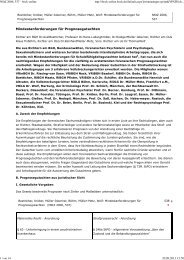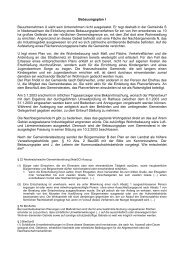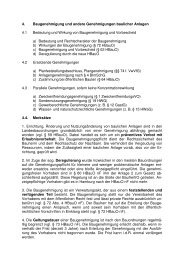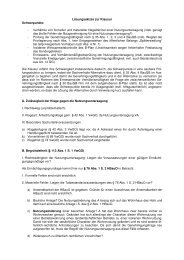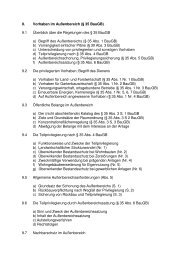Sessar Porto Problems criminology has with criminal law
Sessar Porto Problems criminology has with criminal law
Sessar Porto Problems criminology has with criminal law
You also want an ePaper? Increase the reach of your titles
YUMPU automatically turns print PDFs into web optimized ePapers that Google loves.
3<br />
provoked some unease <strong>with</strong>in the judiciary (which was included in the survey) when it became<br />
apparent that judges, and especially prosecutors, were more punitive than the public (on<br />
the basis of the Hamburg survey four groups were formed, male and female judges and male<br />
and female prosecutors; the expected largest discrepancy existed between male prosecutors<br />
<strong>with</strong> the highest and female judges <strong>with</strong> the lowest level of punitivity, <strong>Sessar</strong> 1992, 226-232).<br />
Sometimes, however, criminological results are in perfect harmony <strong>with</strong> the justice system’s<br />
need to master its daily workload. For example, after thorough investigations of the development<br />
of juvenile delinquency over time, especially of the “aging-out phenomenon”, criminologists<br />
formulated a triad of normalcy in the sense of almost ubiquitous occasional delinquent<br />
behaviour during adolescence, the rare discovery of minor delinquents and their expectable<br />
autonomous desistence from delinquent acts even in the many cases of nondiscovery<br />
(<strong>Sessar</strong> 1997). Insights of this kind helped to introduce what is called "Diversion"<br />
through which a formal <strong>criminal</strong> sentence is replaced by the dismissal of the case, <strong>with</strong> or<br />
<strong>with</strong>out preceding informal educational measures, mostly at the pre-trial level, sometimes in<br />
court. (Of course, juveniles committing serious offences are not included in the program.) For<br />
instance, in 2006 two thirds of juvenile proceedings in Germany involving chargeable minors<br />
were dealt <strong>with</strong> in this matter (in Hamburg the figure was over 80%). As one can see, criminological<br />
findings are accepted as long as they suit the legal system’s requirements – whether<br />
these be of a theoretical or, regarding case-load problems, practical nature.<br />
Another positive example is provided by Portuguese drug policy: on the basis of recommendations<br />
provided by a commission of experts the whole area surrounding illegal drugs <strong>has</strong><br />
seen a trend towards significant de<strong>criminal</strong>ization (Law 30/2000 of 29 November 2000, entered<br />
into force in July 2001). Even the possession of hard drugs for personal use in the first<br />
ten days is exempt from formal punishment. The fear expressed by some that Portugal would<br />
turn into a paradise for drug addicts <strong>has</strong> not materialized, and both the number of drug related<br />
deaths and HIV-infections was down 50% between 2000 and 2003. Cândido da Agra plausibly<br />
labeled this a "Requiem pour la guerre à la drogue" (2009; see also Quintas 2006). In the<br />
absence of further information it will be assumed that the mass of accumulated evidence concerning<br />
the social misery and the many crimes that were generated by the costly war on drugs<br />
finally lead to a re-orientation of the political system, more precisely, to a change from opinion-based<br />
policy to evidence-based policy (Davies 2004). This, indeed, is a rare event and<br />
merits much attention from other countries<br />
3. Theoretical experiments.<br />
These small examples of different degrees of acceptance displayed by the agencies of crime<br />
control to the results of criminological research seem to lack a consistent picture. It would be<br />
difficult to find an explanation which unites the divergent observations in a satisfying way.<br />
Beyond this is the much larger question as to how and to what degree <strong>criminology</strong> is accepted<br />
outside of itself that is, by crime-related disciplines outside of its own field, and in which way.<br />
In an effort to bring theory-based clarity to this situation, an analytical differentiation will be<br />
made between <strong>criminology</strong> as part of the scientific field and <strong>criminal</strong> <strong>law</strong> <strong>with</strong> its policies as<br />
part of the legal (and the political) field. The dividing line is found in societal systems or<br />
fields. To this end I refer to two sociologists from Germany and France, Niklas Luhmann and<br />
Pierre Bourdieu, who each individually developed comparable concepts to approaching the<br />
systems character of science and <strong>law</strong> (and politics).<br />
The foundation of modern systems theory is built on, though emancipated from, the structural-functional<br />
theory of Talcott Parsons. Society is composed of functional – closed - systems<br />
such as science, politics and <strong>law</strong> (alongside economy, medicine, education, art etc.).<br />
None of these systems are of greater or lesser importance than the others; that is, they are not<br />
hierarchically ordered. A system in this context is seen as developing a relatively autonomous,




